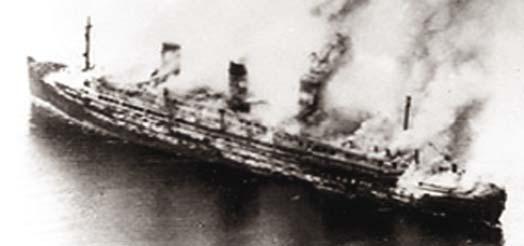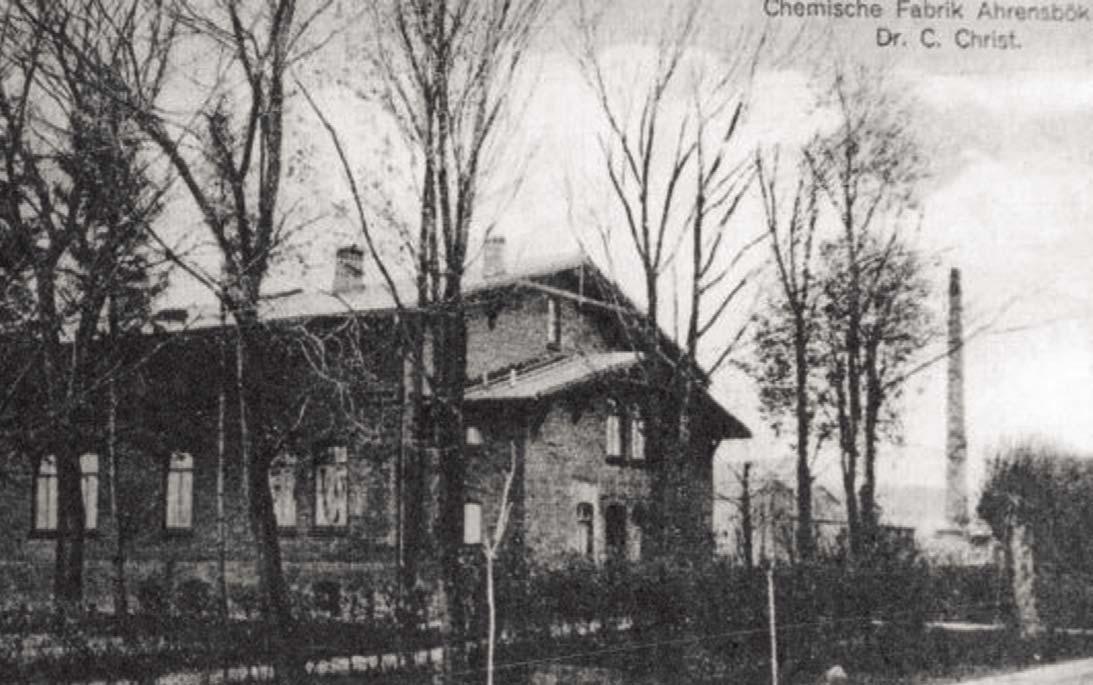
5 minute read
Ahrensbök – A Memorial With a Lesson in Germany
Hannah Miska
In the mid nineties, a young reverend of the local Protestant Church in Ahrensbök, a peaceful little town in Schleswig-Holstein between the Baltic and the North Sea, overheard a girl in his confirmation class say: “What do the shitty Jews do in a German bible?”
Advertisement
The reverend was shocked. He decided to educate his class on Jewish history, research the local history and “walk” it with the kids. He was surprised at what he found: some ugly Nazi history.
In October 1933, soon after Hitler had taken power, the local Nazi governor in Ahrensbök used his discretionary powers to establish a small concentration camp. He imprisoned people from the region who did not scream “Heil” with the growing Nazi hoards – members of the Social Democratic Party (SPD), communists, trade unionists, civil servants, members of religious sects and homeless people.
Nobody died in the camp. But people were brutally beaten, mistreated and publicly humiliated when they had to march to work in white overalls and clogs at minus 27 degrees. The camp was closed down in May 1934, and most of the prisoners were released.
A second event occurred in April 1945. Early in the morning of a cold spring day about 500 concentration camp prisoners were marched through villages and towns of the Holstein region. They also marched through Ahrensbök, with SS men on each side killing those who broke down or who stepped aside. A grave in Ahrensbök holds six unknown victims. The commanding officer of this death march was Max Schmidt, an SS man who lived in the region.
The prisoners came from an Auschwitz sub camp, Fürstengrube, and from Mittelbau-Dora, a labour camp in the Harz mountains. They stayed two weeks in the Ahrensbök area and were then marched to Lübeck Bay on the Baltic coast. They were forced onto three ships that were crowded with 7000 prisoners from all over Northern Germany and Danzig.
Before the Germans had decided what to do with them, a tragedy unfolded: On 3 May, the British Air Force bombed all ships in the Lübeck bay believing them to be German troopships.

Thousands of people drowned, burned to death or sank imprisoned in the ships. Only a few hundred were rescued. (One of these was Jack Fogel, now a volunteer at the Jewish Holocaust Centre.)
The tragedy has gone down in history as the “Cap Arcona catastrophe” – the Cap Arcona was the name of the biggest of the three ships.
For decades few people cared to remember. As in many parts of Germany, people in Ahrensbök were only too happy to let the past rest. But not the Reverend. Together with ordinary citizens from Ahrensbök and other Holstein communities, he founded a citizen initiative: to keep the memory alive, to pass on to young Germans the lessons learned from history, to stand up for democracy and to fight anti-Semitism. Three years later, the group received public money and was able to buy the building that housed the early concentration camp. In May 2001, the memorial was opened with a permanent exhibition which tells the story of the death march.
Memorial For Documentation
The memorial has become a local centre for documentation and exhibition, for remembrance and reflection, for education and reunions. Monika Metzner-Zinssmeister, CEO, told me that their most important aim is to address and reach young Germans.
“I’m not telling a secret when I confess that Germany has not been able to completely wipe out Nazi thinking. Our project in Ahrensbök has not been greeted with open arms by the local population. There are neo-Nazis in German state parliaments, and neo Nazi music bands who poison the souls of German Youth. Going to schools, telling young people that nothing was good under Hitler, that it’s no fun to live in a dictatorship, that even kids as young as them were harassed and put into concentration camps – that is our contribution to fight for democracy and to fight for the cause that history will not be repeated.”
The educational programme of the memorial – which operates with volunteers only and very limited funds – is impressive.
The three local schools are regularly invited to learn about the history of the house and the death march – which had, more than likely, been observed by their grandparents. Students are encouraged to do their own research about the local Nazi history as a school-end project. The results of the projects are presented and exhibited in the memorial. Students also did radio broadcasts, videos, or participated in bike tours along the route of the death march.

On January 27 – Holocaust Memorial Day – students of all schools of the region, workers of the communal administrations and apprentices of local trade companies are invited to visit the memorial to pay respect to the victims of the Holocaust.
On 9 November – Kristallnacht, (Night of the broken glass) –there is a commemoration in a church to remember how it all started. Students organize the whole event, they play music, act, or read texts from survivors.
Sometimes Rock and Pop days are held in the memorial – benefit concerts performed by young people. Handicapped young people have performed summer concerts. The board is organising a meeting between Christians and Muslims from a mosque in the nearby town of Lübeck.
An outstanding event every summer is the international youth camp that is organised with Aktion Suehnezeichen – a peace organization founded in 1958 by the Protestant Church for reconciliation, acknowledging its failing role during the Nazi regime. Eighteen to twenty young people from Germany and other parts of Europe work and live together for two weeks, camping in the garden of the memorial and using the rather simple facilities in the house. They do physical work together, i.e., renovating the house or cultivating the garden; and they do academic work: researching and discussing recent German history, learning about the three major monotheistic world religions, about different nations, cultures, races and religions.
An integral part of the camp are visits to a church, a mosque, a synagogue, and to other memorials. In addition, two or three young asylum seekers from the region are invited to participate in the camp. They talk about their lives and share their experience as asylum seekers in Germany with the group. A member of Amnesty International is invited to speak about current violations of human rights. These initiatives pursue another major objective of the group: to not only research the past but point out that racist, religious and/or political harassment also occur in the present.
“Most precious to us”, says Monika, “is our connection with the death march survivors and their families. In 1997, we, the members of the association, sent a letter to some survivors whose whereabouts we had discovered. In the letter we recalled that the victims of Nazi terror had been subjected to inhuman violence and egregious injustice in the name of the German people, committed by Germans. We wrote that we were ashamed of the suffering that so many people had to bear.”
Sam Pivnik, a survivor from England, was the first who accepted an invitation. When he visited and showed his extraordinary willingness for reconciliation, the mayor of Ahrensbök committed on the spot to erect a memorial for the death march. 20,000 Mark were raised, many people worked voluntarily, and in 1999, fifteen young people from Poland, Czechia, Belorus and Germany –who paid for their own expenses – sculptured fourteen concrete columns with clay panels. Twelve of the columns were erected in each village along the route of the death march. One column has been brought to Auschwitz-Fürstengrube, and one column stands in front of the Ahrensbök memorial.
Dr Hannah Miska was born in 1955 in Magdeburg, East Germany. At 21, she continued her studies in West Germany. She graduated in Psychology, attained a PhD, and worked as a speech writer for politicians. Subsequently she worked within Human Resources, developing organisations, coaching and mentoring individuals and teams in Germany and other countries and cultural environments in Asia Pacific. Recently, she edited a book on political satires.
As a German born long after the war, she doesn’t feel any guilt for what has happened, but feels shame. She strongly believes that the Holocaust must not be forgotten, and wishes to make a contribution to the Holocaust Centre’s activities.
She works with the Centre’s curator, writing stories of the survivor guides for display in the museum, researching items that have been donated, and translating German archival material into English.







